Editor's note:
Fifty years after the country’s reunification, Ho Chi Minh City has transformed itself into the most dynamic economic center in the country. Here, the flow of innovation is constantly penetrating every field - from infrastructure, technology to the way people live, work and connect with the world.
However, rapid development also brings with it difficult-to-solve problems: population pressure, overloaded infrastructure, climate change, development gap between inner cities and suburbs...
In the context that the Party and State are implementing many major policies to create new positions and strengths for the country, Ho Chi Minh City - as a locomotive - also needs to quickly "solve" its own problems with a long-term, comprehensive and practical vision.
VietNamNet introduces the series of articles “HCMC: Removing bottlenecks to reach out in the future”. This is a collection of proposals and strategic advice from experts who have worked for many years in developed countries, have a global perspective but are always concerned about the future of the city. All share the same desire: HCMC will become a smart, livable city, in harmony with nature, with its own identity in the flow of globalization.
Dr. Huynh Dat Vu Khoa was born in 1977 and grew up in Ho Chi Minh City during the post-war period. His childhood memories are associated with the cool river, boat racing festivals and bowls of rice mixed with bo bo...
After graduating from university, he left the city to study and work in Europe. Every time he returned, he was surprised by the drastic changes in the city, along with the "wounds" of a rapidly developing city that needed to be "healed".
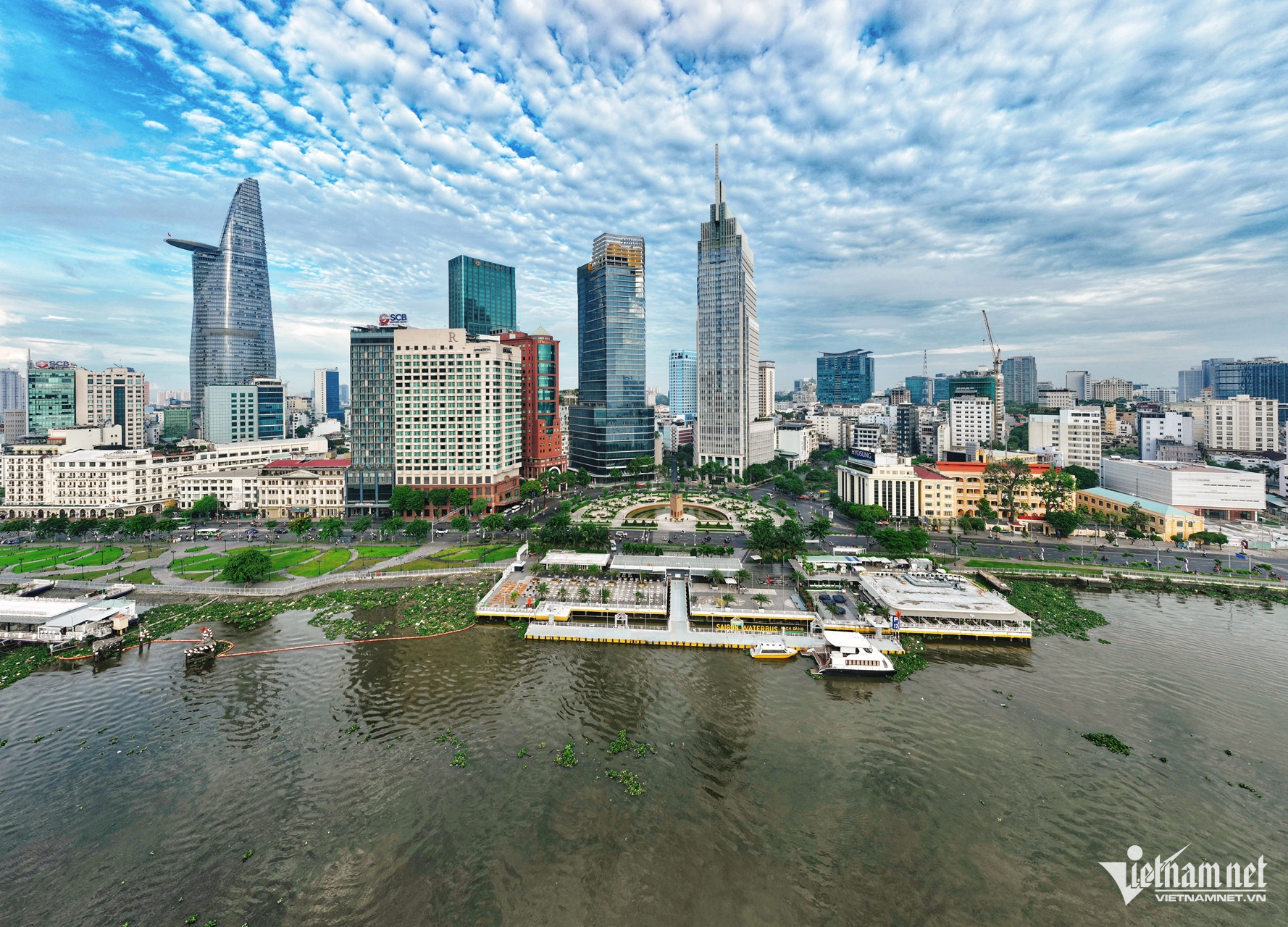
After 50 years since the country's reunification, Ho Chi Minh City has taken on a new look, becoming the leading economic center of the country. Photo: Hoang Ha
“In all future plans, we need to put the environment first. We must make sustainable development the guiding principle for all development of Ho Chi Minh City.
If we can do that, in the future, Ho Chi Minh City will not only be the heart of the country's economy but also a green living space, where people come not only for economic needs but also for connection, peace and pride.
I hope that after 50 years and for many years to come, Ho Chi Minh City will become a symbol of not only material but also spiritual prosperity," Mr. Khoa shared.
3 strategic pillars
As a senior advisor at the Norwegian Geotechnical Institute and Director of the Energy and Marine Network of AVSE Global, Dr. Khoa and other experts provide strategic directions for Ho Chi Minh City around three pillars: digital economy, sustainable development and high-quality human resources.
To achieve the ambitious goal of the digital economy accounting for 45% of the city's GDP by 2030, according to Dr. Khoa, first of all, information technology infrastructure must be prioritized for synchronous investment to support the 4.0 industries.
Besides, the city needs to promote the construction of innovation centers - a model that has been effectively applied in Singapore and Taiwan (China).
“This is the core factor to attract startups, nurture technology ideas and develop key industries such as semiconductors,” said Mr. Khoa.
A typical example is the Thu Thiem Eco Smart City project worth 2 billion USD invested by a Korean corporation, aiming to build a smart city with modern IT infrastructure, integrating financial, commercial and entertainment services.
In addition, applying digital technology will help Ho Chi Minh City manage urban areas more effectively, from smart transportation to administrative reform, contributing to improving the quality of life for people.
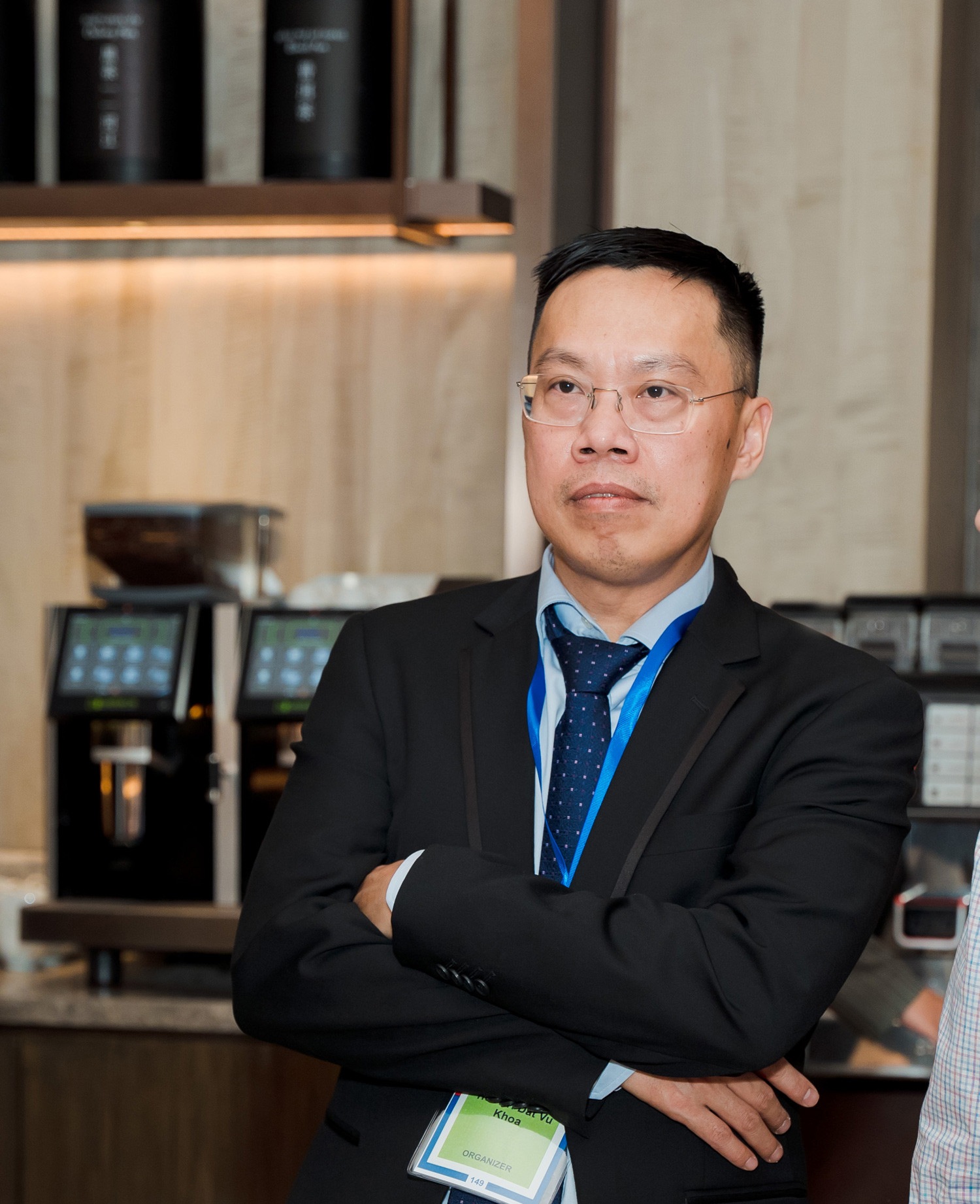
Dr. Huynh Dat Vu Khoa - Senior Advisor at the Norwegian Geotechnical Institute, Director of the Energy and Marine Network, AVSE Global. Photo: NVCC
According to Mr. Khoa, sustainable development is a vital factor in the planning and development of any urban area. With its unique geographical location, Ho Chi Minh City is vulnerable to climate change, flooding and rising sea levels.
The city also needs to urgently deploy adaptation solutions, prioritizing the development of renewable energy, especially solar energy.
In addition, urban planning needs to be associated with green spaces, green corridors, open parks, etc. Modern public transport, especially metro networks and electric buses, also play a key role in reducing emissions and improving the living environment.
Notably, Dr. Khoa noted the "old but difficult problem", which is the drainage system of Ho Chi Minh City.
“The system was built during the French colonial period and was designed for 500,000 people, while the city’s current population is nearly 10 million. The renovation is necessary to cope with flooding and adapt to climate change.”
He also emphasized: “All large infrastructure projects such as highways, seaports, inter-provincial railways, etc. need to be designed with climate-adaptive standards, using clean materials and environmentally friendly technology.”
The third pillar is human resources. Dr. Khoa believes that this is the key factor for all development. According to him, Ho Chi Minh City needs to invest heavily in training high-quality human resources, both short-term and long-term, especially in the high-tech sector.
He proposed promoting cooperation with international educational organizations, universities, and research institutes - a model that many European countries have effectively implemented. Interdisciplinary and transnational training links will create a workforce capable of competing globally.
Streamlining the apparatus, digitizing, building a common database
In the context of the administrative reform wave being strongly promoted by the Central Government, Ho Chi Minh City - the economic locomotive of the country - is expected to be a pioneer in streamlining the apparatus, modernizing administration and reshaping the development model to suit the stature of a large urban area in the region.
According to Dr. Dinh Thanh Huong - Executive Director of Knowledge and AVSE Global Project, since 2023, the organization has advised the Ho Chi Minh City government on an administrative reform program covering many issues, including: streamlining the apparatus, making the apparatus more efficient and comprehensive digitalization.
“HCMC has a very dynamic private economy, but the administrative apparatus has not kept up with that growth rate. Streamlining the apparatus is a prerequisite for the city to operate effectively and respond quickly to development needs,” said Dr. Huong.
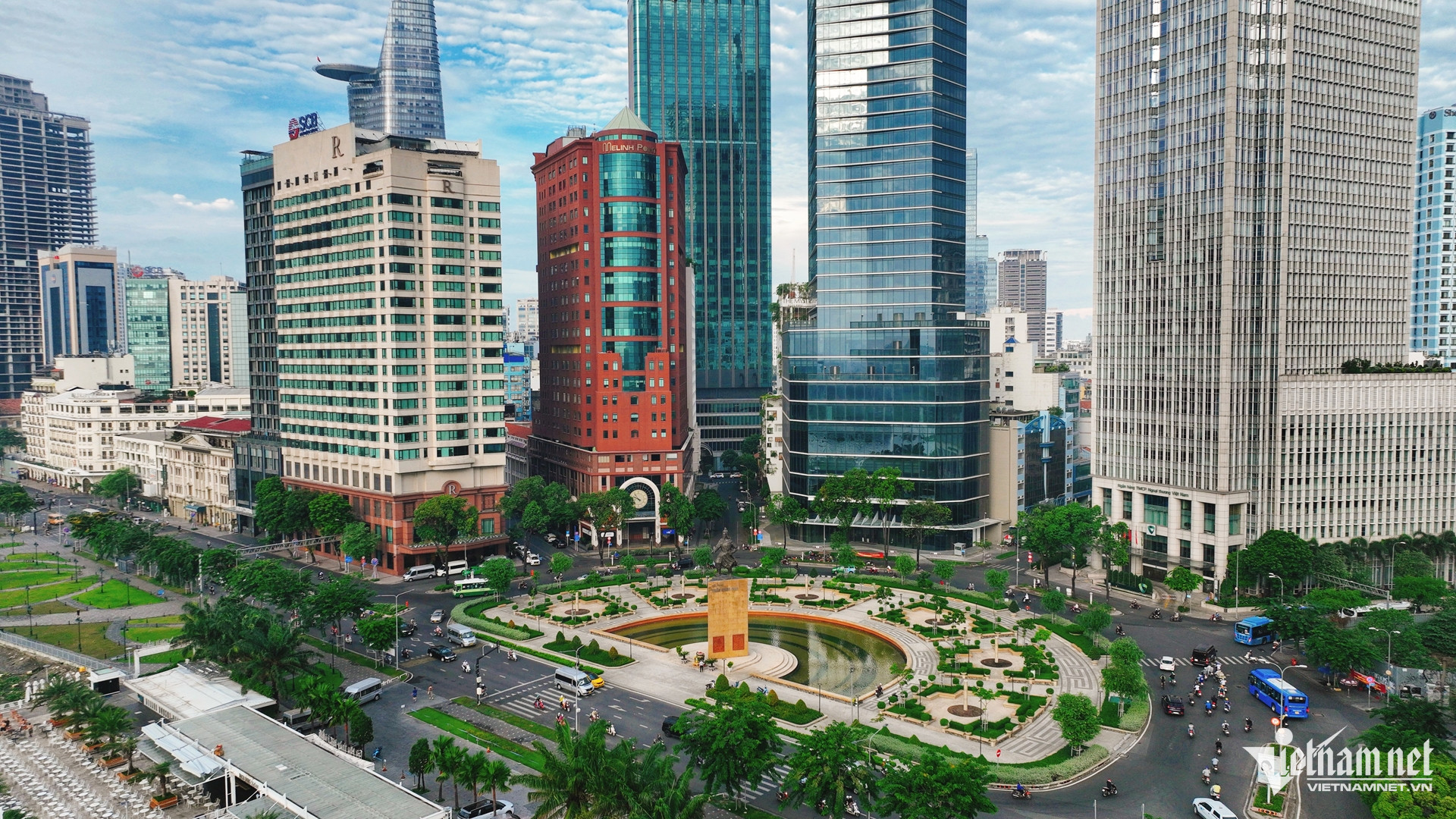
Issues of streamlining the apparatus, digitalization... have been proposed by AVSE to Ho Chi Minh City since 2023. Photo: Hoang Ha
One of the important recommendations that AVSE has mentioned is to streamline the administrative apparatus and simplify procedures. Accordingly, the city needs to review the work processing process between departments, branches and sectors to eliminate unnecessary intermediaries, thereby shortening processing time and improving service efficiency for people and businesses.
Along with that is the digitization of all documents, papers and administrative processes. This requirement is not new but is still being slow to implement at many levels.
“Up to now, there are still cases of officials using personal email to receive important documents from state agencies. This is not only unprofessional but also poses potential risks to information security,” AVSE experts warned.
AVSE believes that Ho Chi Minh City needs to build a common database, connected between state agencies, ensuring connectivity and transparency in the decision-making process. This database will also create a premise for the city to apply new technologies such as artificial intelligence (AI) and big data in smart urban management.
Administrative merger: A breakthrough step
Along with administrative reform, another content that AVSE considers to be breakthrough and urgent is merging provinces and cities and restructuring administrative units.
From a professional perspective, Dr. Huong said: “Currently, there are provinces with a population of just over 600,000 people like Quang Tri, while a district like Binh Chanh in Ho Chi Minh City has nearly 1 million people. This creates an unreasonable allocation of resources, personnel and organizational structure.”
The merger not only helps reduce administrative focal points but also contributes to reducing the burden on the state budget. Instead of maintaining 3 provincial People's Committees and 3 independent operating apparatuses, when combined, only 1 provincial People's Committee and corresponding departments are needed, helping to save a significant budget. In addition, when the number of focal points is reduced, the issuance and implementation of policies will also be more convenient, synchronous and effective.
“Instead of having 63 Departments of Science and Technology as at present, after the merger, this number will only be 34. Thus, policies on innovation, digital transformation, etc. will be much easier to implement and monitor,” Dr. Huong analyzed.
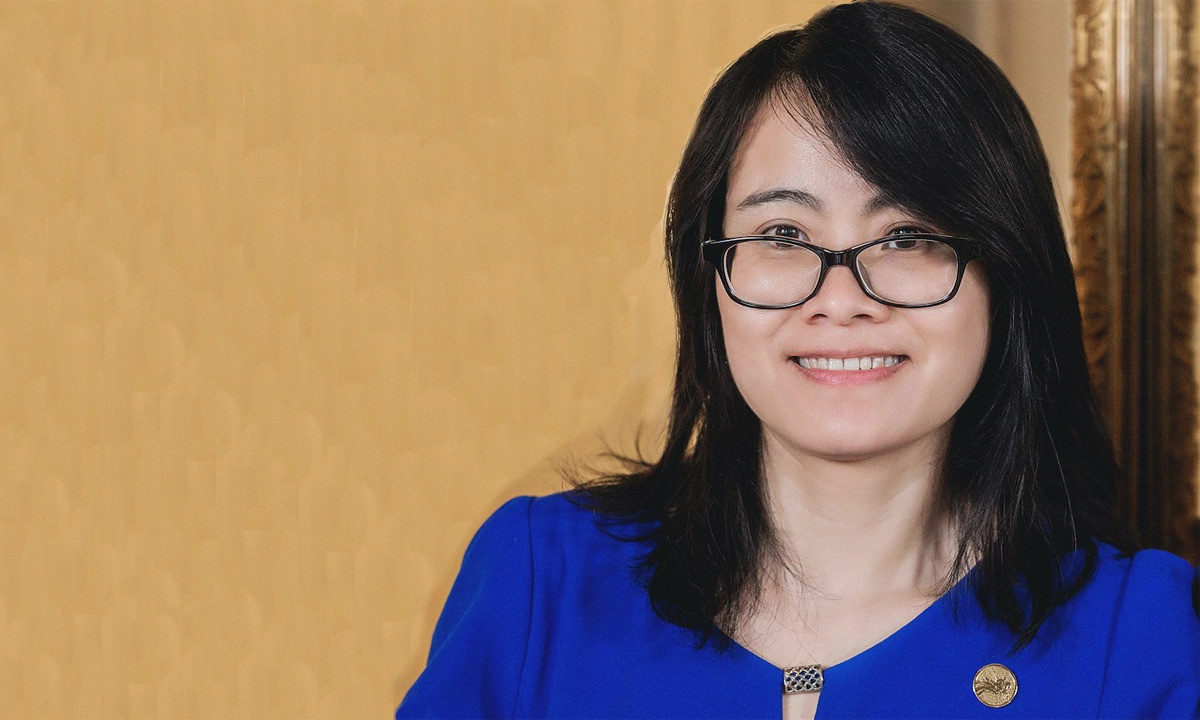
Dr. Dinh Thanh Huong affirmed that merging provinces and cities and streamlining the apparatus is the right policy. Photo: NVCC
Dr. Huong said she was very pleased that AVSE’s previous recommendations and advice were gradually being put into practice. One of the contents was a flexible financial mechanism to support the process of streamlining the apparatus, such as an early retirement support package for officials.
According to the female expert, instead of maintaining a stable job but lacking motivation, capable people can use this support to start a business, invest in local products or support their children to start a business.
“This will create new flows between the public and private sectors, helping to stimulate innovation and the local economy,” she said.
AVSE believes that expanding the administrative boundaries of Ho Chi Minh City and connecting with neighboring localities will form a large urban area with a complete economic - industrial - innovation - logistics ecosystem.
According to Dr. Huong, these localities all have potential: Binh Duong has a developed industrial park, and Ba Ria - Vung Tau has advantages in international ports and tourism. When combined, Ho Chi Minh City will form an ecosystem that is large enough to compete with large city models in the region and the world.
However, the city needs a strategy to reorganize administrative levels, reallocate resources and clearly define the role of each locality in the overall linkage. This requires a long-term vision, consensus from the central government and provinces, along with a clear and methodical implementation roadmap.
The Association of Vietnamese Scientists and Experts Global (AVSE Global) is an international non-profit organization, established in 2011. As of 2019, the organization has gathered more than 10,000 senior experts and Vietnamese scientists around the world working in many fields.
Established in France, AVSE Global operates with the mission of connecting Vietnamese knowledge globally, contributing to the sustainable development of Vietnam through policy consulting, knowledge and technology transfer.
The organization implements many strategic programs in areas such as economy, education, technology, smart cities, and innovation. AVSE Global regularly coordinates with government agencies, universities, and businesses to organize international conferences, forums, and capacity development projects.
With a network of experts spanning over 20 countries, AVSE Global has become an important bridge between global Vietnamese intellectual resources and domestic development needs, contributing to enhancing Vietnam's position in the context of international integration.
Next: Breakthrough opportunities and global brand aspirations of a city with 80% immigrants
Vietnamnet.vn
Source: https://vietnamnet.vn/tphcm-nua-the-ky-phat-trien-qua-nhanh-va-nhung-vet-thuong-can-chua-lanh-2393019.html



![[Photo] Chinese, Lao, and Cambodian troops participate in the parade to celebrate the 50th anniversary of the Liberation of the South and National Reunification Day](https://vphoto.vietnam.vn/thumb/1200x675/vietnam/resource/IMAGE/2025/4/30/30d2204b414549cfb5dc784544a72dee)

![[Photo] The parade took to the streets, walking among the arms of tens of thousands of people.](https://vphoto.vietnam.vn/thumb/1200x675/vietnam/resource/IMAGE/2025/4/30/180ec64521094c87bdb5a983ff1a30a4)

![[Photo] Cultural, sports and media bloc at the 50th Anniversary of Southern Liberation and National Reunification Day](https://vphoto.vietnam.vn/thumb/1200x675/vietnam/resource/IMAGE/2025/4/30/8a22f876e8d24890be2ae3d88c9b201c)


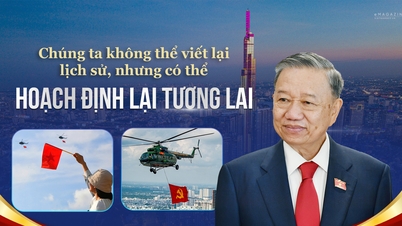
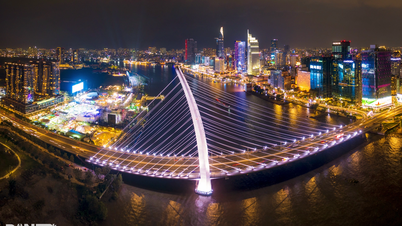



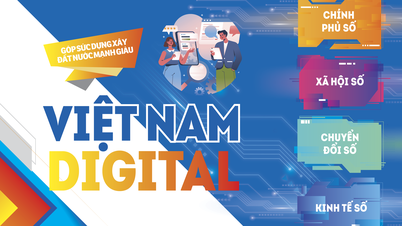



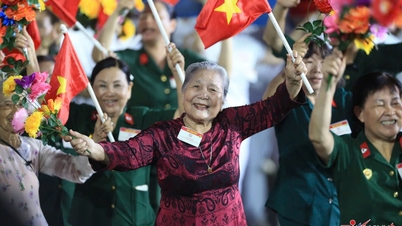
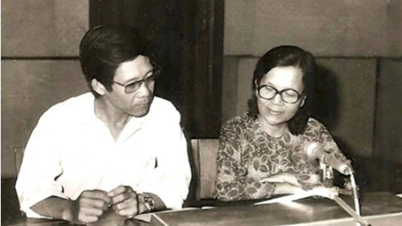









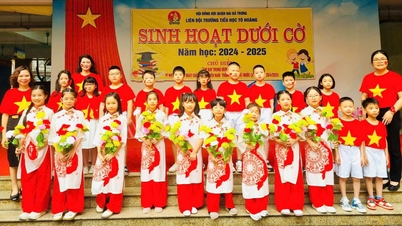


![[Photo] Performance of the Air Force Squadron at the 50th Anniversary of the Liberation of the South and National Reunification Day](https://vphoto.vietnam.vn/thumb/1200x675/vietnam/resource/IMAGE/2025/4/30/cb781ed625fc4774bb82982d31bead1e)












































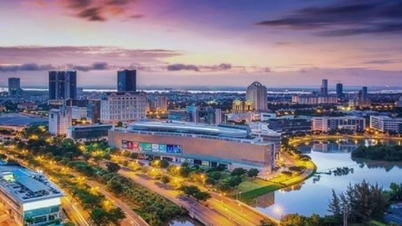

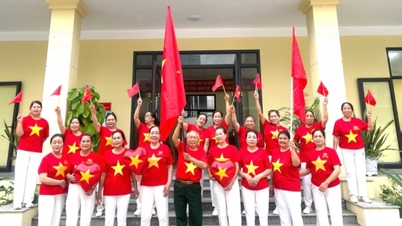

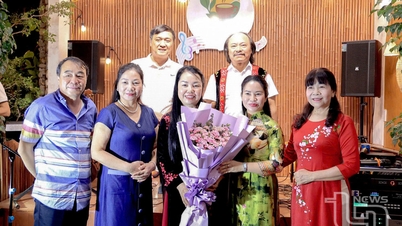

















Comment (0)